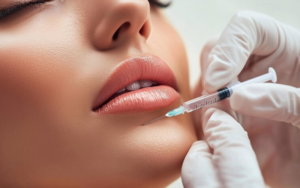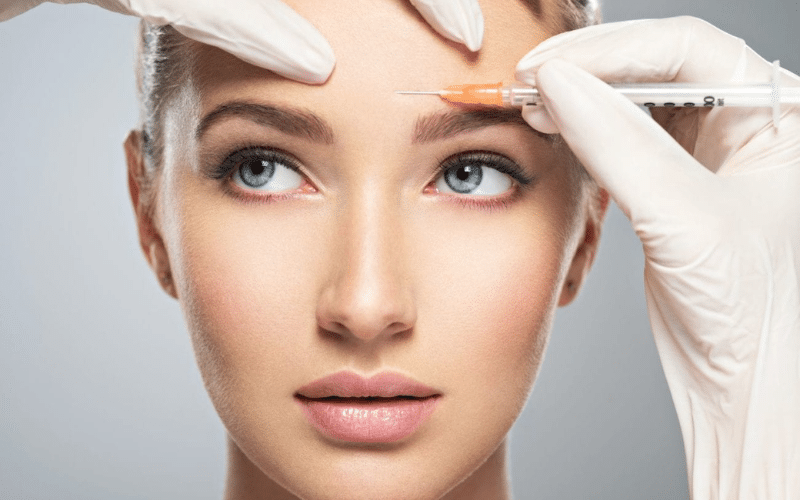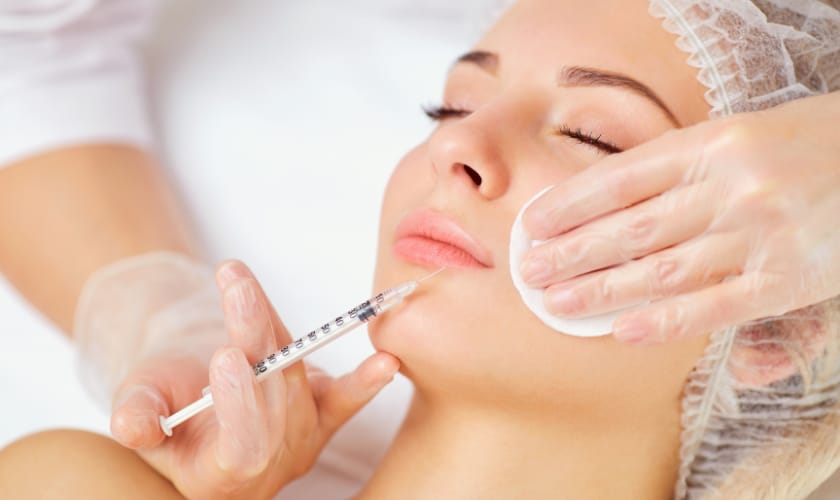Considering Botox or dermal fillers for the first time can be both exciting and nerve-wracking. These cosmetic treatments have gained immense popularity for their ability to enhance natural beauty and restore youthful appearance with minimal downtime.
However, the idea of getting injections on your face may raise questions and concerns. In this blog, we’ll walk you through everything you need to know about your first Botox or dermal filler appointment, from consultation to aftercare, so you can approach your session with confidence.
Why Consider Botox or Dermal Fillers?
Before diving into the appointment process, it’s essential to understand the differences and benefits of Botox and dermal fillers.
- Botox: A purified form of botulinum toxin, Botox works by temporarily relaxing the muscles that cause wrinkles, especially in areas like the forehead, crow’s feet, and between the eyebrows.
- Dermal Fillers: These are gel-like substances injected beneath the skin to restore lost volume, smooth lines, and enhance facial contours. Fillers are commonly used in areas like the cheeks, lips, and around the mouth.
Both treatments are minimally invasive and can significantly enhance your appearance, giving you a refreshed and youthful look. Now, let’s go over what you can expect during your first visit.
The Initial Consultation: Setting Realistic Expectations
Your journey starts with a consultation where you meet with a licensed professional to discuss your goals, concerns, and expectations. This step is crucial as it helps ensure the treatment plan is tailored to your needs.
What Happens During The Consultation?
- Assessment of Your Concerns: The practitioner will ask about the specific areas you’d like to improve and what results you’re hoping to achieve.
- Medical History: You’ll be asked about your medical history, including any allergies, previous cosmetic treatments, and any medications you’re currently taking.
- Facial Examination: The provider will examine your face, paying attention to your facial structure, skin elasticity, and areas of concern to recommend the best treatment.
- Custom Treatment Plan: Based on your goals and facial analysis, the provider will suggest either Botox, dermal fillers or a combination of both. They’ll explain how many units of Botox or syringes of filler will be needed to achieve the desired effect.
Key Questions To Ask
To make the most out of your consultation, here are a few questions you can ask:
- How many treatments will I need to achieve my goals?
- What kind of results can I realistically expect?
- How long will the effects last?
- Are there any risks or side effects I should be aware of?
- What can I do to prepare for the procedure?
What Does The Process Include of These treatments?
Once your treatment plan is finalized, the next step is the procedure itself. Both Botox and dermal fillers are non-surgical and relatively quick, with most appointments lasting about 30 minutes to an hour.
Botox Procedure
- Preparation: Before starting, your face will be cleaned, and the practitioner may apply a numbing cream, especially if you’re sensitive to injections.
- Injections: Using a fine needle, small amounts of Botox will be injected into the targeted muscles. Most patients describe the sensation as a small pinch or mild discomfort.
- Duration: The Botox injections are quick, usually lasting only 10 to 15 minutes, depending on the areas being treated.
Dermal Filler Procedure

- Preparation: As with Botox, your skin will be cleaned, and a numbing cream might be applied to minimize discomfort.
- Injections: The filler is injected beneath the skin in the areas that need volume or contour enhancement. The practitioner may gently massage the area to ensure even distribution.
- Duration: Depending on the number of areas being treated, the dermal filler procedure can take about 20 to 30 minutes.
Immediate Aftercare
- No Downtime: One of the best things about both treatments is that there’s little to no downtime. You can usually return to your daily activities right after the appointment.
- Common Side Effects: You may notice slight redness, swelling, or bruising around the injection sites, but these effects typically resolve within a few hours to a few days.
- Botox Results: Botox takes about 3 to 7 days to show its full effect as the muscles gradually relax.
- Dermal Filler Results: Filler results are visible almost immediately, though minor swelling can obscure the final outcome for the first day or two.
Aftercare Tips: Ensuring The Best Outcome
Proper aftercare is essential to maximize the results of your treatment. While Botox and fillers are non-invasive, your skin and muscles need a little time to settle after the injections.
Do’s:
- Apply Ice: Gently apply ice packs to reduce swelling and discomfort, but avoid pressing too hard on the treated areas.
- Stay Upright: For at least 4 hours after the procedure, avoid lying down to prevent the Botox from migrating to unintended areas.
- Avoid Touching Your Face: Refrain from massaging or rubbing the injection sites for at least 24 hours.
Don’ts:
- Avoid Strenuous Activity: Avoid vigorous exercise for 24 hours to prevent increased blood flow, which can affect the results.
- No Alcohol or Blood Thinners: For the first 24 hours, avoid alcohol or medications like aspirin that can increase bruising.
- Stay Out of the Sun: Sun exposure can worsen swelling and bruising, so try to limit your time outdoors and wear sunscreen if necessary.
How Long Do The Results Last?
One of the most common questions patients have is how long they can expect the results to last.
- Botox: Results from Botox typically last 3 to 4 months, after which the muscle activity will gradually return, and you’ll notice wrinkles reappearing.
- Dermal Fillers: The longevity of fillers depends on the type used and the area treated, but generally, they last anywhere from 6 to 18 months.
You can schedule maintenance appointments to keep your look fresh once the effects start to wear off.
Are Botox or Dermal Fillers Right For You?
Undergoing Botox or dermal filler treatments for the first time can feel like a big step, but knowing what to expect can ease your concerns and help you achieve the best results. From the initial consultation to aftercare, each stage of the process is designed to ensure your comfort and satisfaction.
Remember to choose a licensed and knowledgeable provider who understands your goals and can deliver the results you’re looking for. With the right care and expertise, Botox and dermal fillers can enhance your natural beauty, boost your confidence, and help you feel your best.
Make sure to follow your provider’s recommendations, ask questions during your consultation, and enjoy the confidence that comes with your refreshed & youthful appearance.


